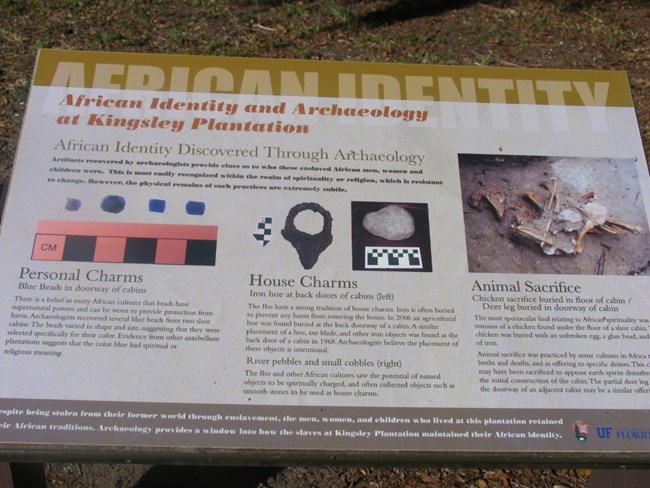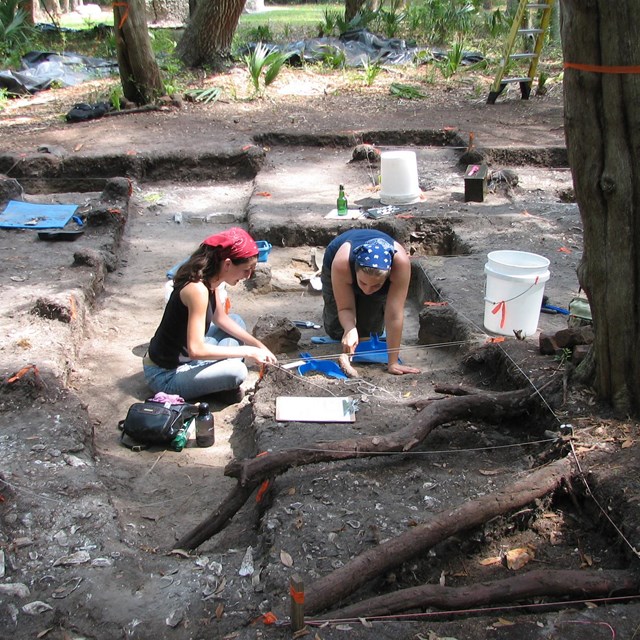

NPS Photo Archaeological investigations at some of the Kingsley slave cabins produced artifacts that give us a glimpse into daily life at this community of enslaved people. Hundreds of artifacts were recovered during the archaeological excavations in 1968 and 1981. Images from left to right: ginger beer bottle, ceramic and glass fragments, metal cross, bead. Gardening, hunting, fishing, and cooking occupied time after plantation work was finished. Clay pipes, handmade clay marbles, a harmonica, toothbrush, brass bell, and glass inkwell are other possessions found at the slave cabins – intriguing traces of the occupants’ personal lives. The 1968 excavation is considered by some to be the beginning of African American archaeology. It was not the first place where a dig revealed evidence of African American lives, but it was the first place where the research question was specifically focused on the African and African-American experience. The Tradition ContinuesIn 2006, the University of Florida began a multi-year project at the slave quarters. These field schools have revealed more about lives of enslaved people. Artifacts provide insight into every day life, food ways, and religion. Among the discoveries was the location of the graveyard at Kingsley Plantation. In spite of their small, size, these artifacts have been the only clues to the daily activities of the inhabitants of the slave quarters at Kingsley Plantation You have a role in protecting our archaeological treasures. Do not pick up items found on the grounds. Report illegal activities to a park ranger. Remember - digging for artifacts or removing anything from the park is illegal and robs us all of our heritage. Return to History of Kingsley Plantation. More to Uncover
|
Last updated: August 6, 2024



